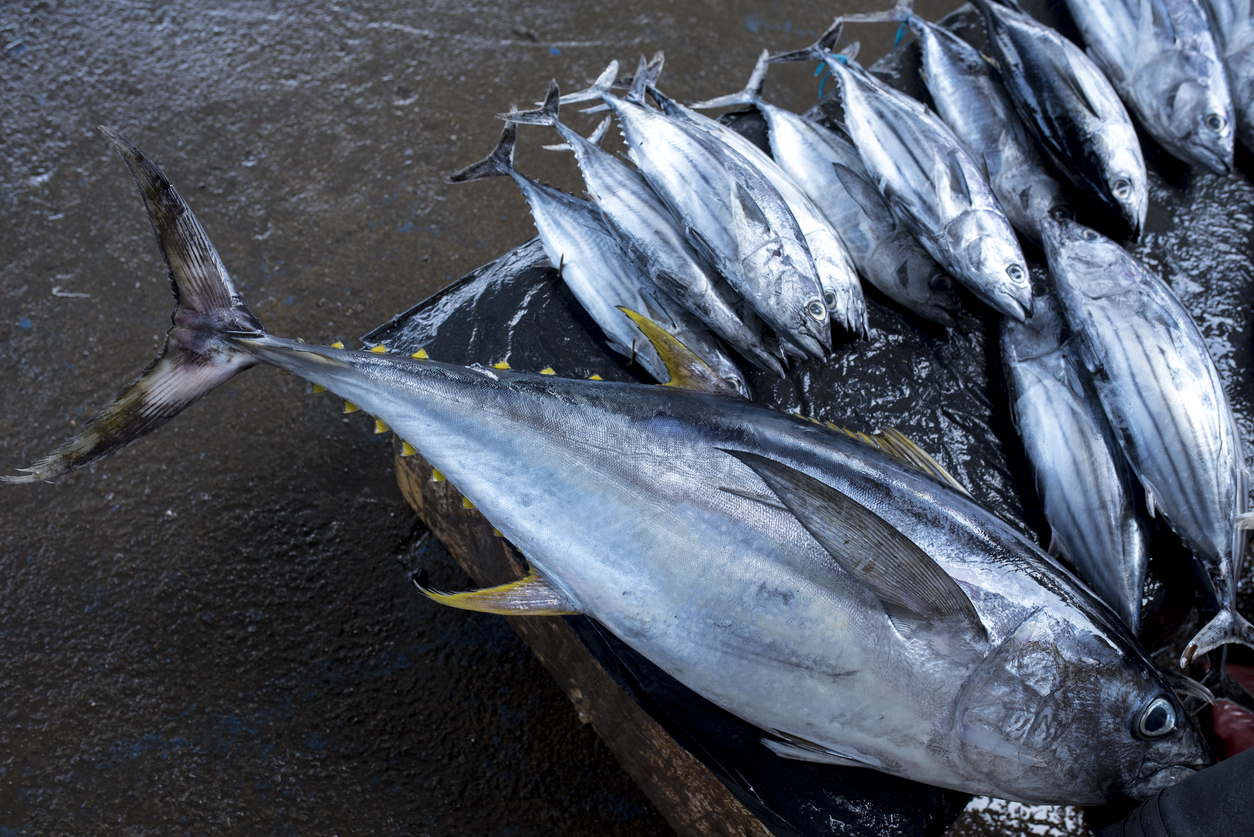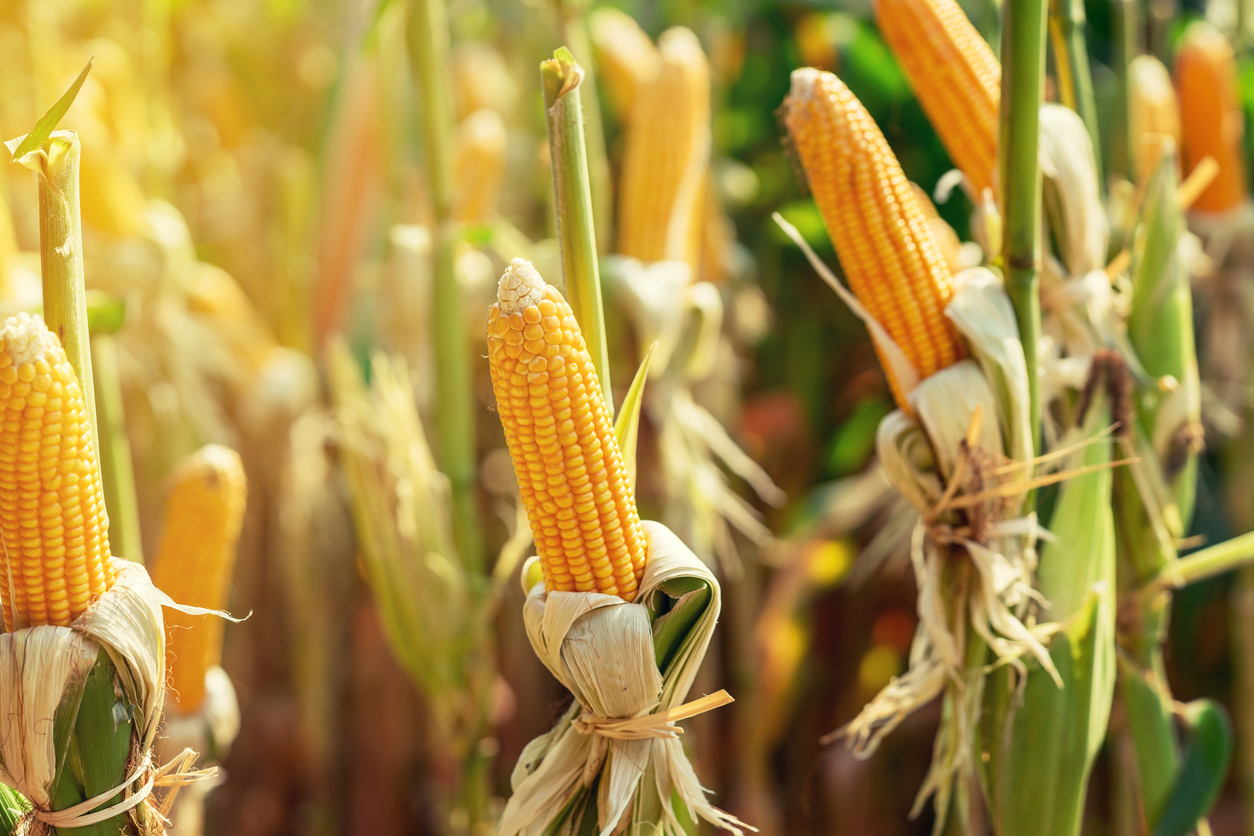Understanding the Tuna Grading Chart: A Comprehensive Guide for Seafood Enthusiasts
Understanding the Tuna Grading Chart: A Comprehensive Guide for Seafood Enthusiasts
Are you a seafood enthusiast who is always on the hunt for the freshest and most flavorful tuna? If so, then you’re in luck! In today’s blog post, we will dive deep into the world of tuna grading and unravel its mysteries. Whether you’re a seasoned sushi connoisseur or simply someone who enjoys the occasional seared tuna steak, understanding the tuna grading chart is essential for making informed choices when it comes to selecting this prized fish. So grab your chopsticks and join us as we embark on a comprehensive journey that will elevate your seafood experience to new depths!
Introduction to the Tuna Grading Chart
Introduction to the Tuna Grading Chart
The tuna grading chart is a standardized system used by seafood professionals to determine the quality and value of tuna fish. It follows certain criteria that assess various factors such as appearance, texture, fat content, and overall freshness.
This grading chart has become an essential tool in the seafood industry, helping buyers and sellers alike in making informed decisions about their purchases. Understanding this chart can be helpful for both restaurant owners looking for high-quality tuna for their menu, as well as home cooks who want to make sure they are getting the best product available.
In this section, we will delve into the details of the tuna grading chart and break down each grade so you can have a better understanding of what it means and how it can impact your seafood choices.
History of Tuna Grading Chart
The concept of using a grading chart for tuna was first introduced by Japan’s Ministry of Agriculture, Forestry and Fisheries in 1969. The Japanese market was one of the largest consumers of tuna at that time, and they wanted to establish a standard for evaluating its quality.
Over time, this system evolved into what we know today as the “tuna grading chart,” which has been adopted by many countries worldwide. Its purpose remains unchanged – to provide a consistent method for assessing different grades of tuna based on specific criteria.
Why is Tuna Grading Important?
Tuna grading is an essential aspect of the seafood industry, especially in the case of tuna. It is a standardized system used to classify and categorize tuna based on various quality factors such as size, color, fat content, and overall freshness. This grading process plays a crucial role in determining the value and price of tuna in the market.
One of the main reasons why tuna grading is important is to ensure consistency in quality. Tuna can be caught from different areas around the world, and each region has its own unique environmental conditions that can impact the taste and texture of the fish. The grading chart provides a uniform standard for evaluating tuna regardless of where it was caught, resulting in consistent quality among different suppliers.
Moreover, tuna grading helps consumers make informed decisions when purchasing their seafood. The grading chart provides detailed information about each grade of tuna, allowing consumers to choose their preferred grade based on their preferences and budget. For instance, those who prefer leaner cuts for sashimi may opt for higher graded tunas with lower fat content, while those looking for marbling and richer flavor may go for lower graded tunas with higher fat content.
Another significant advantage of having a standardized tuna grading system is food safety. By assessing several factors such as freshness and preservation methods used during transportation and storage, consumers are assured that they are buying safe-to-eat seafood products. Additionally, businesses involved in trading or selling tuna must adhere to strict guidelines set by regulatory bodies to maintain food safety standards.
Understanding the Different Grades of Tuna
Tuna is a popular and highly prized fish in the world of seafood. It is versatile, delicious, and packed with nutrients, making it a favorite among fish lovers. However, not all tuna are created equal – they come in different grades that determine their quality and value. Understanding these grades is important for anyone who wants to make informed decisions when purchasing tuna.
There are three main grades of tuna: sashimi grade, premium grade, and standard grade. Each grade has its own characteristics that distinguish it from the others. Here is a detailed breakdown of what each grade entails:
1) Sashimi Grade Tuna:
Sashimi grade tuna is considered to be the highest quality of tuna available in the market. It is also known as “super frozen” or “ultra-low temperature” tuna because it is immediately flash-frozen after being caught at an extremely low temperature (-60 degrees Fahrenheit). This process preserves the freshness and flavor of the fish while preventing any potential bacterial growth.
The appearance of sashimi grade tuna is bright red with white marbling throughout the flesh. The texture should be firm but still tender enough to melt in your mouth when eaten raw. Sashimi grade tuna should have a mild yet rich taste with no off-putting odors.
– Prime
The “Prime” section on the tuna grading chart is reserved for the highest quality and most desirable tuna. These fish are typically caught in colder waters, which helps to produce a more firm and flavorful flesh.
When looking at the tuna grading chart, you will notice that there are two categories within the “Prime” section: Prime +1 and Prime +2. Both of these categories represent top-quality tuna, but there are slight differences between them.
Prime +1:
Tuna in the Prime +1 category have a deep red color with a high fat content, indicating excellent marbling and flavor. These fish are usually larger in size, weighing over 100 pounds. They also tend to be caught in colder waters such as Alaska or Northern Japan.
One key characteristic of Prime +1 tuna is its firm texture. When cut into sashimi or cooked on the grill, this type of tuna holds its shape and doesn’t fall apart easily. This makes it ideal for sushi rolls or searing on high heat.
Prime +2:
Tuna in the Prime +2 category also have a deep red color and high fat content, but they may be slightly smaller than those in the Prime +1 category. This is because they are typically caught in warmer waters such as Hawaii or Mexico.
Despite being slightly smaller, Prime +2 tuna still possess all of the desirable qualities of their counterparts in the Prime+1 category.
– Choice
Choice is an important aspect to consider when it comes to purchasing and consuming seafood, especially tuna. Understanding the Tuna Grading Chart can help you make informed decisions about your tuna choices. This chart categorizes tuna based on its quality, freshness, and grade, making it easier for seafood enthusiasts to differentiate between different types of tuna.
The grading chart is divided into three main categories: color, texture, and fat content. Each category has a range of grades that indicate the level of quality and desirability of the fish. Let’s take a closer look at each category to understand how they affect your choice of tuna.
1) Color:
The color of a fish can tell a lot about its freshness and quality. In general, fresh tuna should have a vibrant red or pink color with no signs of discoloration or dark spots. The Tuna Grading Chart uses three grades within this category: 1+, 2+, and 3+. A grade of 1+ indicates the highest quality with a bright red color that is evenly distributed throughout the flesh. Grade 2+ has a slightly less vibrant color but is still considered good quality. Grade 3+, on the other hand, may have some discoloration or uneven coloring which could indicate that it is not as fresh.
– Standard
Standard tuna grading is an essential aspect of the seafood industry, as it ensures that quality and safety standards are met for consumers. The standard grade is the second category on the tuna grading chart, falling between premium and economy grades.
The standard grade consists of tuna that meets specific criteria in terms of appearance, texture, and taste. These criteria are determined by a combination of factors, including size, color, fat content, and overall condition. Tuna in this grade is still considered high-quality and suitable for consumption; however, it may not have all the qualities necessary to be classified as premium.
When it comes to size, standard-grade tuna typically ranges from 25-50 pounds in weight. This size range is ideal for commercial fishing vessels as they can catch a significant amount of fish without compromising quality or sustainability. Tuna within this weight range also tends to have a good balance of meat to bone ratio, making it easier to process and cook.
In terms of color, standard-grade tuna should have a deep red hue with no discoloration or browning. The flesh should be firm with no mushiness or soft spots when touched. Additionally, there should be minimal bruising or blood spots on the skin. These factors indicate that the fish was handled properly during capture and storage.
– Utility
The utility of the tuna grading chart is an essential aspect for seafood enthusiasts to understand. This section will delve into the various uses and benefits of the grading chart, as well as how it can be effectively utilized in different scenarios.
1. Defining Quality: The primary function of the tuna grading chart is to provide a standardized system for determining the quality of tunas. By assigning grades based on factors such as color, texture, and fat content, this chart helps buyers and sellers alike in accurately assessing the value of a particular fish.
2. Facilitating Trade: With its clear and consistent classification system, the tuna grading chart makes it easier for seafood distributors to trade across different markets. This not only saves time but also ensures that buyers receive high-quality tunas regardless of their location.
3. Ensuring Consistency: For restaurants and other establishments that serve tuna dishes regularly, consistency is crucial in maintaining customer satisfaction. By using the grading chart, chefs can ensure that they are using consistently high-quality tunas in all their preparations.
4. Selecting for Specific Dishes: Different grades on the tuna grading chart can indicate which types of dishes a particular fish is best suited for. For example, sashimi-grade tunas tend to have a higher fat content and are ideal for raw consumption, while lower grades may be better suited for cooked dishes like seared or grilled tuna steaks.
Factors Affecting Tuna Grading
Tuna grading is an essential process in the seafood industry, ensuring that only the highest quality tuna makes its way to consumers. The grading system for tuna is based on various factors that determine its freshness, flavor, and overall quality. In this section, we will discuss the key factors that affect tuna grading.
1. Species of Tuna
The species of tuna plays a significant role in determining its grade. There are several types of tuna, including bluefin, yellowfin, albacore, skipjack, and bigeye. Among these varieties, bluefin and yellowfin are considered premium species due to their rich flavor and high oil content. These species usually command a higher grade compared to others.
2. Size of Tuna
The size of the fish also affects its grading as it directly impacts the meat’s texture and fat content. Larger tunas tend to have more marbling (fat streaks) throughout the flesh, making them more flavorful and tender compared to smaller ones. Therefore, larger tunas typically receive a higher grade than smaller ones.
3. Catching Method
The method used for catching tuna can also influence its grade significantly. Line-caught or pole-and-line caught tunas are considered superior as they are individually caught using sustainable fishing methods without harming other marine life or damaging the fish’s flesh during capture.
– Species of Tuna
Tuna is a widely consumed fish that has been an important part of human diets for centuries. While there are several different species of tuna, not all are equally valued in the seafood market. To help consumers understand the differences between these species, a grading chart is often used to classify them based on their quality and value.
1. Yellowfin Tuna
Yellowfin tuna, also known as Ahi tuna, is one of the most popular species of tuna in the world. It is found in tropical and subtropical waters and can grow up to 6 feet in length and weigh up to 400 pounds. This species has a moderate level of fat content, making it ideal for both raw consumption (sashimi) and cooking methods such as grilling or searing. Its meat is pinkish-red in color with firm texture and a mild flavor.
2. Bluefin Tuna
Bluefin tuna is considered one of the highest-quality tunas due to its rich flavor and high-fat content. It is found in temperate waters around the world and can grow up to 10 feet long and weigh over 1000 pounds. The meat of bluefin tuna ranges from deep red to almost purple, with a marbling effect that adds tenderness and flavor. This species is highly sought after by sushi restaurants for its fatty belly meat known as toro.
– Size and Age of Tuna
Tuna is one of the most sought-after fish in the world for its flavorful and versatile meat. It is commonly used in various cuisines, from sushi to salads to hearty grilled dishes. In order to ensure that consumers are getting quality tuna, a grading system has been established to categorize and label different types of tuna based on their size and age.
Size and age are two important factors that affect the quality and taste of tuna. Here’s a detailed breakdown of how they play a role in the grading chart:
1. Size:
The size of a tuna refers to its weight, which can range from 10 pounds up to 1000 pounds or more depending on the species. Generally, larger tunas have more fat content and therefore tend to be higher in quality. This is because as tunas grow, they accumulate more fat reserves which give them a richer flavor and firmer texture.
In terms of grading, larger tunas are considered superior compared to smaller ones. They are usually labeled as “Jumbo” or “Giant” on the grading chart, indicating that they are big enough for commercial use and have high market value.
2. Age:
The age of a tuna is determined by counting the number of growth rings found on its scales or otoliths (ear bones). These rings form over time as the fish grows, similar to tree rings. The older the tuna, the more rings it will have.
– Catching and Handling Methods
Catching and handling methods play a crucial role in the quality and grade of tuna. Tuna is a highly sought-after fish, and its value is determined by various factors such as species, size, and most importantly, how it was caught and handled.
There are several methods used to catch tuna, each with its own impact on the quality of the fish. Here are some common catching techniques:
1. Pole-and-line fishing: This method involves using a long pole with baited hooks to catch tuna one at a time. It is considered to be one of the most sustainable ways of catching tuna as it reduces bycatch (unwanted fish caught in the process). Tuna caught through this method are usually fresher and have minimal stress compared to other methods.
2. Purse seine fishing: In this method, large nets called purse seines are used to encircle schools of tuna before they are hauled onto the vessel. While this method allows for larger catches at once, there is a higher risk of bycatch, leading to lower-quality tuna.
3. Longline fishing: As the name suggests, this technique involves using long lines with multiple baited hooks that can stretch up to 50 miles behind a boat. The use of these lines often results in significant bycatch and can cause damage or stress to the captured fish.
How to Read a Tuna Grading Chart?
Reading a tuna grading chart may seem intimidating at first, but once you understand how it works, you’ll be able to confidently choose the best tuna for your needs. In this section, we’ll break down the steps on how to read a tuna grading chart.
Step 1: Familiarize Yourself with the Grades
The first step in reading a tuna grading chart is to familiarize yourself with the different grades. Tuna is typically graded on three main criteria: color, fat content, and texture. Each grade is represented by a letter or number code.
Grade A – This is the highest quality grade and is usually indicated by an “A” or “1”. It represents tuna that has bright red flesh, high fat content, and firm texture.
Grade B – This grade is indicated by a “B” or “2” and represents slightly lower quality than Grade A. The flesh may be less vibrant in color and have a slightly lower fat content.
Grade C – The lowest grade of tuna is represented by a “C” or “3”. It has pale flesh, low fat content, and softer texture.
Step 2: Understand the Color Codes
Once you are familiar with the grades, it’s important to understand the color codes used in the chart. These colors correspond to each grade and can help you quickly identify which grade of tuna you are looking at.
Red – This color represents Grade A (highest quality) tuna.
Yellow – Yellow indicates Grade B (medium quality) tuna
Tips for Choosing High-Quality Tuna Based
When it comes to choosing high-quality tuna, there are a few key factors to consider. Here are some tips to help you make the best choice when selecting your tuna based on the tuna grading chart:
1. Know the Different Grades of Tuna: Before diving into choosing high-quality tuna, it’s important to understand the different grades available. The most common grades of tuna include sashimi-grade (AAA), all-purpose (AA), and trimmings (A). Sashimi-grade is considered the highest quality and is typically used for raw consumption in dishes like sushi or sashimi.
2. Look for Bright Red Flesh: When examining a piece of tuna, pay attention to its color. High-quality tuna will have a vibrant and bright red flesh, indicating that it is fresh and well-preserved. Avoid dull or brownish meat as this could be a sign of poor quality or improper handling.








Comments are closed.